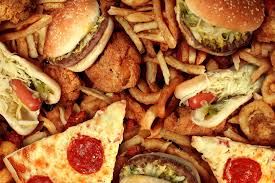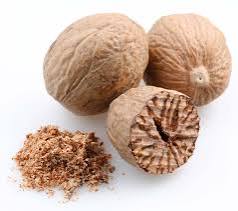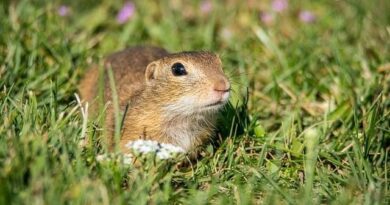15 Foods Dogs and Cats should Not Eat and Why
There are a number of common human foods that your dogs and cats should not eat. The important thing is to know exactly what to avoid. There are some very commonly known ones, such as Chocolate, Alcohol, and Coffee but some lesser known ones such as Grapes, Nutmeg, Onion and the artificial sweetener in gum, Xyitol.
In this article, I will give you an overview of the toxins, PLUS what to do if your dog or cat ingests any of these poisons.
1. Alcoholic Beverages
It is often sweet attracting dogs and cats but can cause serious and fatal intoxications. Don’t ever offer this to your pets.
Here are some of the signs and side effects: In-coordination/ataxia Excitement, Depression, Excessive urination. Breathing rate is slowed Cardiac arrest and death.
2. Avocado
Avocado leaves, fruit, seeds and bark contain a toxic principle known as Persin. The Guatemalan variety is most toxic but all have toxic potential. They cause vomiting/diarrhea primarily gastrointestinal distress.
3. Chocolate (All forms)
Chocolate contains theobromine, a compound that is a cardiac stimulant and a diuretic.
Signs: Initial excitation, Increased drinking and urinating, Vomiting and Diarrhea. Theobromine causes an increased heart rate and arrhythmia. Seizures can then be seen. Death is then possible.
Action Plan: Include vomiting, give activated charcoal, and go to the Vetinarian If depression and seizures begin. Note that Baker’s chocolate and high cocoa content chocolate is the most toxic, the toxic dose is 2 baking squares for a 10lb dog. Regular chocolate bars have little real chocolate and are seldom toxic.
4. Coffee (All forms)
Coffee contains dangerous components called Xanthines, which cause nervous system or urinary system damage and heart muscle stimulation.
5. Fatty Foods

The primary concern here is severe gastrointestinal upset and in some cases Pancreatitis. This can be fatal in some pets and it is almost aleays triggered by a High Fat Meal, such as gravy or bacon.
6. Macadamia Nuts
Macadamia nuts contain an unknown toxin which can affect the digestive and nervous systems and muscles of dogs. This has lead to paralysis. A small number of nuts and even the butter can cause this.
7. Moldy or Spoiled Foods
Many molds contain a type of toxin called an “Aflatoxin”. This is thought to be a common cause of compost toxicity.
Signs: Vomiting/Diarrhea, muscle tremors, in-coordination, elevated temperatures, excessive salivation, and liver damage therefore avoid feeding ANYTHING moldy to your dogs or cat.
8. Onions, onion powder
Onions contain the toxic ingredient Thiosulphate. Pets affected by onion toxicity will develop anemia. One (1) onion can cause this. Fortunately all dogs recover once they stopped from ingesting onions.
Read Also: Comprehensive Guide on How to Grow and Care for Onions
9. Raisins and Grapes
As few as 6 grapes and raisins have caused acute kidney failure in some dogs. The toxic ingredient is not yet known. There ia no treatment yet therefore AVOID feeding ANY grapes or raisins to your dogs.
10. Yeast Dough
The yeast dough/uncooked bread dough will rise in your pet’s stomach causing severe gastrointestinal distress (Vomitting/Diarrhea), Bloating and signs of alcohol toxicity.
11. Xylitol
Xylitol is a artificial sweeter found in sugar free products such as gum, candy etc. signs relate to a sudden drop in glucose (Blood Sugar), in-coordination, collapse and seizures. Avoid feeding any gum/candy to your pets.
12. Apples, Apricots, Cherries, Peaches and Plums
Ingestion of large amounts of stems, seeds and leaves of these fruits can be toxic. They contain a Cyanide type compound and signs of toxicity include apprehension, dilated pupils, difficulty breathing, hyperventilation and shock. Note it’s the seeds and stems that contain the toxic component, not the fruit itself.
13. Potato Peelings and Green looking Potatoes
Potatoes and other Solanum species including the tomato are members of the nightshade farming of plants, these plants contain Solanine and other toxic Alkaloids which if eaten in large enough amounts, can produce drooling, severe gastrointestinal upset, including vomiting and diarrhea, loss of appetite, drowsiness, central nervous system depression, confusion, behavioral changes, weakness, dilated pupils and slowed heart rate.
14. Nutmeg

High levels of nutmeg can be toxic, even fatal. The toxic component is unknown. Signs of toxicity include tremors, seizures, nervous system abnormalities or even death.
15. Tomato Leaves and Stems (Green Parts)
The green parts of the tomato plant are considered toxic because they contain Solanine, which has the potential to produce significant gastrointestinal and central nervous system effects.
Remedies/Solutions
Here are the lists of things to do if your pet has eaten any of these toxic foods:
1. Go to your Veterinarian
If your pet is showing signs of ingesting a poison, it is important that your Vetinarian examines her and treats appropriately. Some toxins can progress and lead to severe seizures. If you suspect antifreeze poisoning, it must be treated within 4-6hours before irreversible kidney damage occurs.
2. Purge the Poison
In most cases of poisoning, getting your pet to Vomit is the most important thing that you can do. Note: DO NOT INDUCE VOMITTING if something caustic has been consumed such as drain cleaner or bleach.
To induce vomiting, give hydrogen peroxide at 1 teaspoon per 10lbs of body weight. If your pet doesn’t vomit in 10 minutes, repeat again. Also bear it in mind that you should never do more than 2 treatments of peroxide. You can also try salt, dilute 1 teaspoon of salt in a tablespoon of water per every 10lbs of body weight.
3. Delay Absorption
Activated charcoal is readily available at most pharmacies. It delays absorption of any toxin by binding to the toxic compound in the stomach and the easiest way is to give a capsule form.
For those garbage-eating dogs, it is s good idea to have hydrogen peroxide and activated charcoal always on hand.
Preventive Measures
Ensure medications are always out of mouth’s reach and also become familiar with toxic plants and remove such plants from and around your house if your pet is a plant-eater. Ensure to also keep your compost covered.
Read Also: 4 Steps to help an Orange Tree Produce Sweet Oranges









